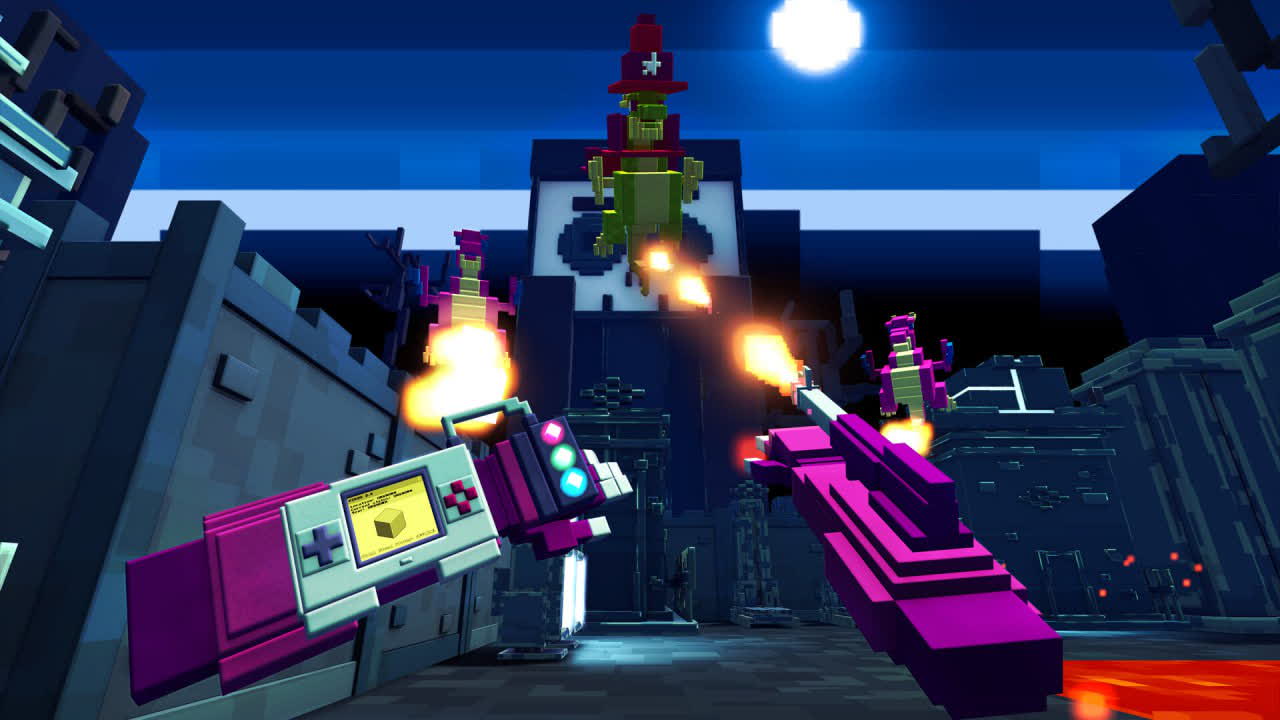‘Pixel Ripped 1978’ – Nostalgia Reignited with Official Atari Support
Virtual reality’s beloved nostalgia-packed series, Pixel Ripped, returns once more, this time diving deep into reimagined Atari 2600 classics from the early ‘80s. With Pixel Ripped 1978, players are transported back to the golden era of gaming. While the game’s first-person RPG approach doesn’t bring a massive leap forward in gameplay mechanics, the sheer charm, novelty, and undeniable passion for retro gaming help smooth over many of its rough patches.
Gameplay
Pixel Ripped revisits its signature mix of retro and immersive gameplay with our trusty digital hero Dot, plunging us into the late ‘70s and early ‘80s—the dawn of home gaming. Although the title suggests 1978, much of the game revolves around the early ‘80s, featuring loving homages to iconic titles of the era. While you won’t encounter Pac-Man, Frogger, or Space Invaders by name, their influences are apparent in the gameplay and design.
Much like its predecessors—Pixel Ripped 1989 (2018) and Pixel Ripped 1995 (2020)—this installment blends classic 2D gameplay on CRT monitors with more modern 3D action as you leap into the game world itself. Players take on the role of Barbara ‘Bug’ Rivers, a fictional Atari developer who teams up with Dot to stop the villainous Cyblin Lord from rewriting the history of Pixel Ripped by altering the game’s past.
Thanks to official backing from Atari, Pixel Ripped 1978 includes a variety of recognizable games from the legendary publisher. You’ll experience creative reworkings of Crystal Castles, Fast Freddie, and Yars’ Revenge, under new names like Bentley’s Quest, Groovin’ Freddie, and Grave Yar. In addition to these revamped classics, you’ll also discover mini-games inspired by popular titles of the era, offering a delightful love letter to the second generation of consoles.
In a significant departure from the typical eight-directional joystick and single-button controls, Pixel Ripped 1978 gradually introduces more complex mechanics, modernizing these retro games while still retaining their core appeal. As you progress, the first-person gameplay is focused on RPG-style exploration, with Dot equipped with tools like a wrist-worn device for puzzle-solving and a blaster for combat. The melee combat offers comedic relief, with weapons ranging from oversized tennis rackets to a massive ‘chancla’ slipper.
However, the game isn’t without its limitations. Combat can feel repetitive, with low enemy variety and foes that seem like bullet sponges, requiring more hits than expected. Still, the frequent introduction of new ideas and creative boss fights help to mitigate these shortcomings, evoking a sense of nostalgic challenge that defined the early gaming era. While the game’s first-person RPG mechanics aren’t groundbreaking, they do enough to keep players engaged as they revisit a time when gameplay was simpler but no less fun.
Immersion
Pixel Ripped 1978 takes full advantage of its Atari roots, delivering a hit of nostalgia that will resonate with fans of the era. Whether you’re holding an Atari 2600 cartridge, inserting it into the console, or hitting play on a retro CRT monitor, the game nails its atmosphere. There’s something deeply satisfying about interacting with these classic gaming elements in VR, sparking the kind of nostalgia that a fictional system just couldn’t quite achieve.
The in-game world is colorful and blocky, a fitting tribute to the era’s visual style. While the overworld presents a more polished, Pixar-like aesthetic, the characters inside the Atari games are suitably simple yet charming. Voice acting is effective, adding to the immersion, though some of the facial animations and item interactions could use refinement.
One standout feature is the freedom to move around and explore in first-person. This is a welcome change from previous titles, which were largely seated experiences. However, there are moments of frustration, such as unclear objectives leading to backtracking and repetition. The game’s auto-save feature helps alleviate this somewhat, ensuring that players aren’t constantly losing progress.
Overall, despite its rough edges, Pixel Ripped 1978 succeeds in immersing players in a world of retro gaming. The developers’ passion for the era shines through, making it clear that this is more than just a cash grab—it’s a heartfelt tribute to a formative period in gaming history.
Comfort
Comfort is a key consideration in VR, and Pixel Ripped 1978 does a good job of keeping players comfortable. The game offers both teleportation and smooth locomotion, with optional snap-turning to cater to various preferences. Dot’s helmet HUD helps mitigate discomfort during movement, making the game accessible to a wide range of players. Additionally, the entire game takes place on a single plane, eliminating the risk of vertigo-inducing platforming or vehicle segments.
Designed to be played seated, Pixel Ripped 1978 ensures that players can enjoy the experience without physical strain, further enhancing comfort and accessibility.
Final Thoughts
Pixel Ripped 1978 may not be a groundbreaking evolution for the series, but it delivers plenty of nostalgia-fueled fun. With official Atari support, the game offers a loving tribute to a bygone era, complete with reimagined classics and engaging VR mechanics. While its first-person RPG elements don’t push the boundaries of the genre, the game’s charm, creativity, and heartfelt dedication to retro gaming make it a worthwhile addition to the series.
Whether you’re a long-time fan of Pixel Ripped or a newcomer to the series, 1978 offers an entertaining and immersive experience that pays homage to the early days of home gaming. Just be prepared for a few rough patches along the way—after all, that’s all part of the retro charm.
